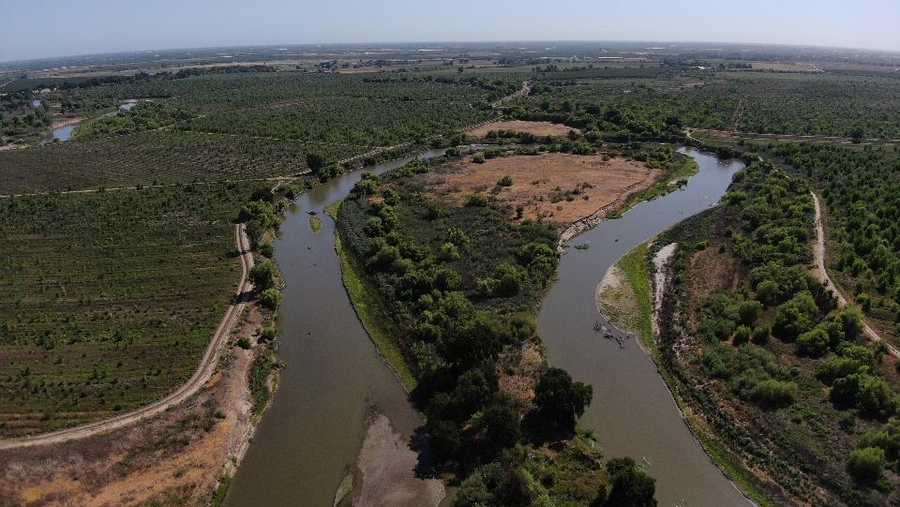California is getting a new state park in the Central Valley
For the first time in 13 years, California will create a new state park — where the San Joaquin and Tuolumne rivers meet among 200-year-old valley oaks and willows in the San Joaquin Valley near Modesto.
California State Parks will plan and develop the new park at Dos Rios Ranch, a restored floodplain on a former dairy farm about 10 miles southwest of Modesto. The state will acquire the 2,100 acres for the new park from River Partners, a Chico-based conservation group that’s spent the past decade restoring the site and will donate the property.
Gov. Gavin Newsom, in his Friday revision to the state budget, shifted $5 million proposed for park acquisition to help prepare what would be California’s 280th state park.
State Parks Director Armando Quintero said Friday that the new park will serve “a park-poor region” — the San Joaquin Valley — and help address inequities in access to state parks and recreation. Most of California’s state parks are clustered along the coast or in the mountains.
“Everyone deserves to have close access to vibrant parks and this opportunity is an exciting one,” he said.
Quintero, who toured Dos Rios Ranch on Wednesday, described a visit to the site as “a walk back in time to a historic Central Valley” before it was turned into farmland. The land offers the chance for visitors to stand on the banks of the Tuolumne River and look at 200-year-old valley oaks.
“You can be standing on a riverbank looking at a view that might not be that different than it was 200 years ago,” he said.
State parks planners will work with the public to decide how the site should be developed and what types of facilities it might have. The public could gain access to the site — possibly just for hiking — by late 2023, he said. Basic park features like parking lots, restrooms, picnic areas and an entry area could be developed within five years, he said, with a campground coming later.
Quintero said he envisions the park also offering opportunities to “get into the water” perhaps with boat launches, fishing spots and swimming areas.
Aside from providing recreational opportunities, the park benefits the environment, he said, continuing the work of River Partners, which has been restoring the land — once home to a dairy farm that grew hay and other silage to feed livestock as well as occasional row crops. Earthen berms built by farmers to hold back floodwaters have been removed and hundreds of thousand native plants — trees, shrubs and grasses — have been planted over the past 10 years to help restore the floodplain and reconnect the land to the nearby rivers, said Alex Karolyi, a spokesperson for River Partners.
A restored floodplain will help relieve pressure on the rivers when they crest, he said, slowing the floodwaters and lessening their impact on downstream communities. In wet winters, much of the park could be closed to visitors as it serves as a flood control relief valve. The pooled floodwaters could also help replenish the groundwater aquifer, which has become so depleted that the Central Valley is sinking.
Restoration efforts at Dos Rios Ranch have already brought back wildlife, including endangered and threatened species that haven’t been seen in the area for decades, said Julie Rentner, River Partners president. Creatures that have returned to the riverfront include a riparian brush rabbit native to the San Joaquin Valley and the Delta, tiny nesting neotropical songbirds, tri-colored blackbirds, monarch butterflies, the valley elderberry beetle, Swainson’s hawks, spring-run Chinook salmon and sturgeon.
But the biggest beneficiaries of the new park will be humans, Rentner said.
“For this place to become publicly accessible park for the people of the valley to enjoy is a dream come true,” she said. “I can’t imagine how good it will feel to make a reservation on ReserveCalifornia (which handles state park camping reservations) and come out and camp and enjoy this remarkable area.”

